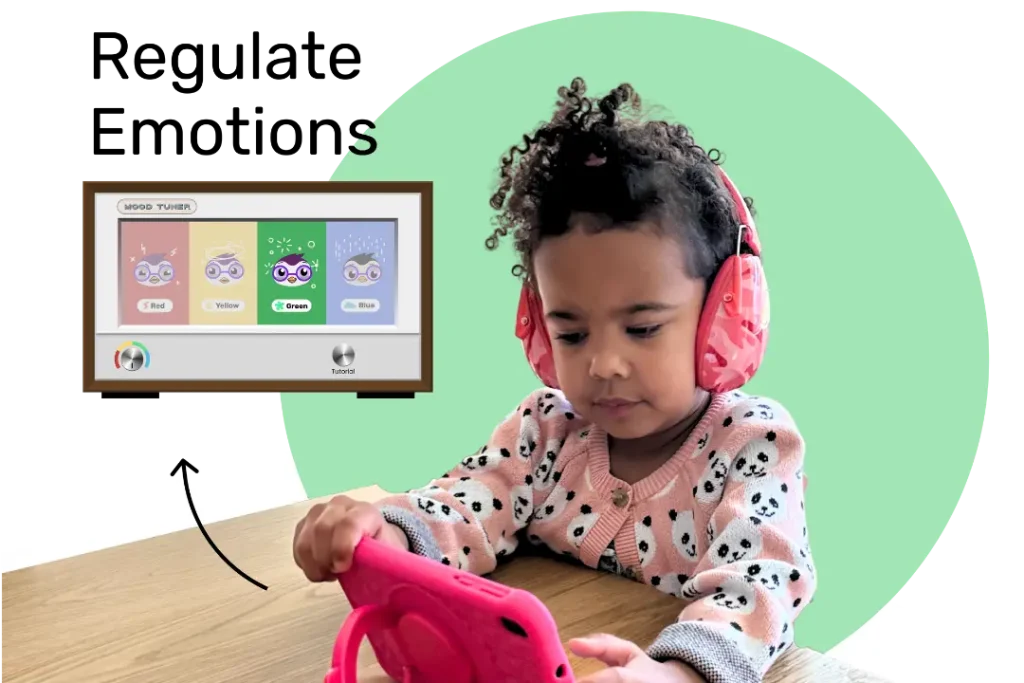Picture your child immersed in a swirl of emotions they can’t quite understand. They’re feeling a storm inside, but they don’t have the words or the tools to express it. As a caregiver, you’re there, witnessing their struggle, and you feel helpless. How can you help them navigate this complex world of emotions? That’s where I come in. As a licensed practitioner who works with kids, I’ve seen this scenario countless times. In this blog post, I’ll share my insights on how to process emotions, a topic that’s crucial for every child’s emotional development, especially for those who are neurodivergent. I’ll guide you through practical steps to help your child understand, express, and manage their emotions effectively. We’ll cover everything from identifying emotions to practicing emotional regulation strategies. This isn’t just about helping your child today; it’s about equipping them with skills to serve them for a lifetime.
Table of Contents
Accept Your Feelings
Regarding emotions, the first step is acceptance. As a caregiver, you might often tell your child, “It’s okay to feel this way.” This is crucial because acceptance is the foundation of emotional processing. It’s about acknowledging the emotions your child is experiencing, whether they’re joy, anger, sadness, or fear. This acceptance creates a safe space for your kid to express their feelings without fear of judgment or rejection.
How do you teach your child to accept their feelings? Start by validating their emotions. If your child is upset because they lost a game, don’t dismiss their feelings by saying, “It’s just a game.” Instead, acknowledge their disappointment and reassure them that it’s okay to feel upset. This simple act of validation can make a world of difference for a child learning to process emotions.

Understand Your Emotions
Once your child has accepted their feelings, the next step is understanding. This is where things can get a bit tricky, especially for neurodivergent kids. Emotions can be complex and confusing, and our caregivers’ job is to help our kids make sense of them.
Start by helping your child identify what they’re feeling. Are they angry? Sad? Excited? Scared? Naming the emotion can provide a sense of control and understanding. Then, try to explore why they’re feeling this way. Did something happen at school? Are they worried about something? This can provide important insights into your child’s emotional world and help them process their feelings more effectively.
Broaden Your Emotional Vocabulary
Did you know that there are over 3,000 words in English to describe emotions? Yet, we often limit ourselves to terms like happy, sad, angry, and scared. Broadening your child’s emotional vocabulary can help them express their feelings more accurately and effectively.

Read more: Emotions Quiz for Kids
For instance, instead of saying they’re happy, they might be ecstatic, content, or thrilled. Instead of being sad, they might feel lonely, disappointed, or discouraged. By introducing your child to a wider range of emotional terms, you’re equipping them with the tools to express and process their emotions more effectively.
Practice Reflection
Reflection is a powerful tool for emotional processing. It involves taking a step back, looking at the emotion, and trying to understand it better. Encourage your child to pause and reflect when feeling a strong emotion. Ask them, “Why do you think you’re feeling this way?” or “What can we do to make you feel better?”
Reflection can be particularly beneficial for neurodivergent kids, who might struggle with understanding and expressing their emotions. By encouraging reflection, you’re helping your child develop a deeper understanding of their emotional world, which can lead to better emotional regulation and processing.
Goally | Kid’s Tablet for Building Emotional Regulation Skills
Is your child struggling with understanding and managing their emotions? Goally teaches emotional regulation skills in a fun and interactive way!

The Mood Tuner app encourages kids to look inwards and identify their feelings, helping them understand what’s going on inside. Once they’ve recognized their emotions, they can choose from a variety of exercises designed to help them self-regulate and find their balance.
Helping your child learn how to process emotions involves a four-step journey: acceptance, understanding, broadening emotional vocabulary, and practicing reflection. As you walk this path with your child, remember that every child is unique, and what works for one might not work for another. Keep exploring, learning, and, most importantly, validating your child’s emotions. These steps aren’t just strategies for today; they’re life skills your kid will carry into adulthood. So, take a deep breath, hold your child’s hand, and embark on this beautiful journey of emotional discovery together.
FAQ’s About How to Process Emotions
What does it mean to process emotions? Processing emotions involves recognizing, understanding, expressing, and managing feelings in a healthy and constructive manner. Why is it important for kids to learn how to process emotions? Learning how to process emotions helps kids develop emotional intelligence, which is crucial for their mental health, social relationships, and overall well-being. How can I help my child accept their emotions? You can help your child accept their emotions by validating their feelings and reassuring them that it's okay to feel the way they do. How can I broaden my child's emotional vocabulary? Introduce your child to a wider range of emotional terms and encourage them to use these words to express their feelings more accurately. What is the role of reflection in processing emotions? Reflection helps in understanding emotions better, leading to effective emotional regulation and processing.
Emily is a seasoned blog writer for Goally, leveraging her extensive background in child psychology and special education to provide valuable insights and resources for parents. Her commitment to understanding and addressing the unique needs of these children, combined with her expertise in educational strategies, makes her a credible and empathetic voice for families.





